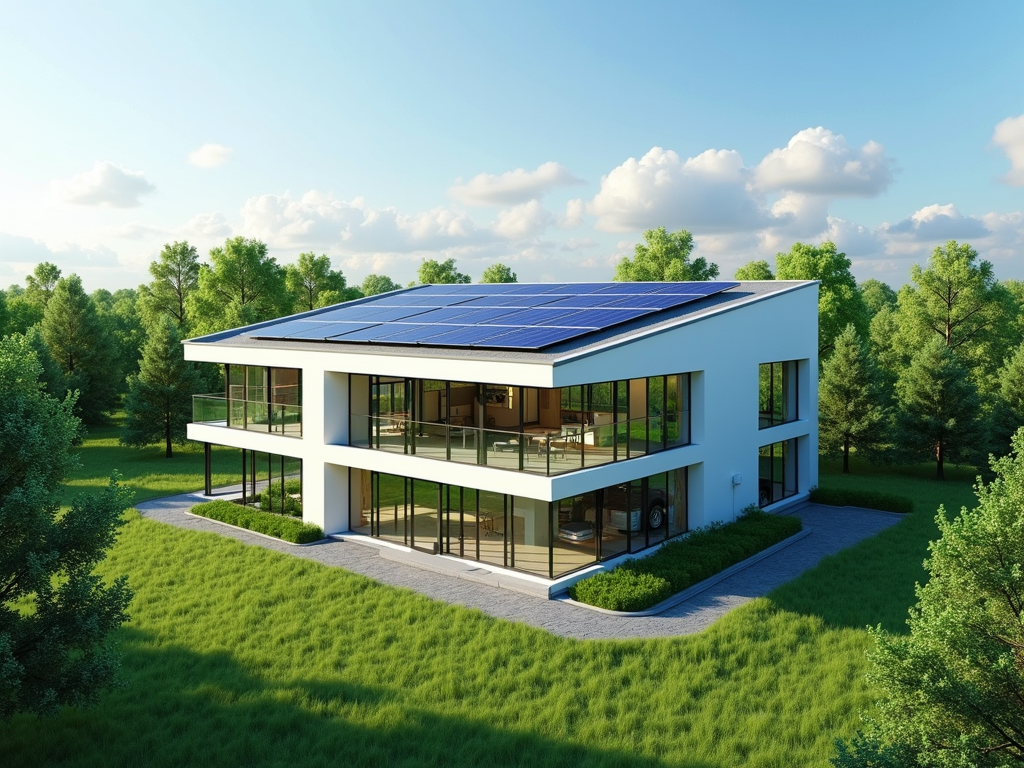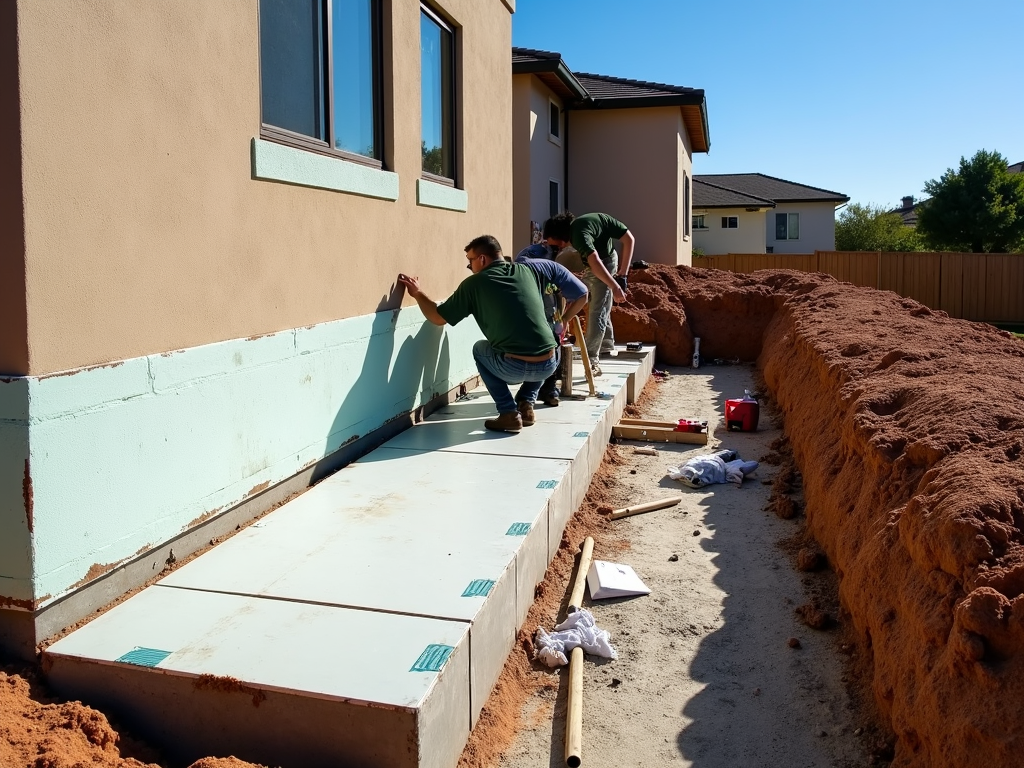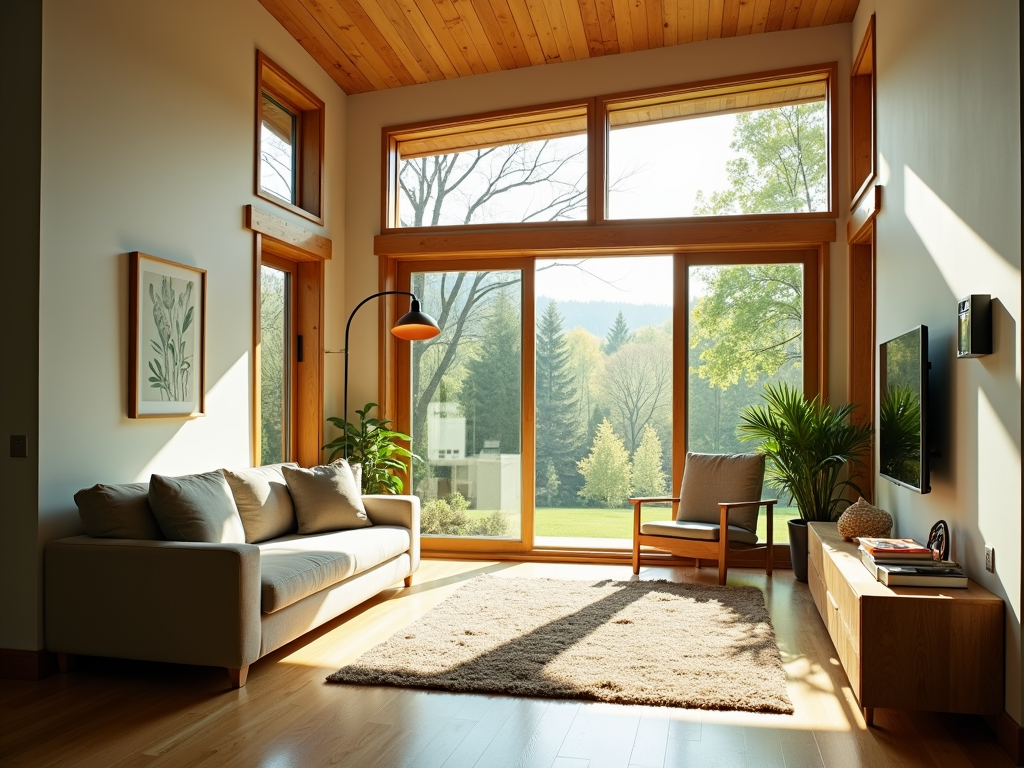Maximizing Energy Efficiency in Building Design
In today's world, where energy costs are rising and environmental concerns are at the forefront, designing buildings that maximize energy efficiency is more important than ever. Energy-efficient buildings not only reduce utility bills but also minimize their carbon footprint, contributing to a more sustainable future. This article explores key strategies for achieving energy efficiency in building design, with a focus on foundational design for sustainable architecture, including the use of shallow foundations and other innovative techniques.

The Role of Foundation Design in Energy Efficiency
When it comes to energy-efficient building design, the foundation is a critical starting point. The foundation not only supports the structure but also plays a significant role in the building's thermal performance. Poorly designed foundations can lead to significant heat loss in winter and heat gain in summer, increasing energy consumption. This is where shallow foundations and smart foundation design come into play.
What Are Shallow Foundations?
Shallow foundations are those that transfer the building's load to the earth near the surface, typically within a few feet of the ground. They are commonly used in residential and light commercial construction where the soil is stable. Examples include slab-on-grade, strip, and pad foundations. While shallow foundations are cost-effective and straightforward to construct, their design must be carefully considered to enhance energy efficiency.
How Foundation Design Impacts Energy Efficiency
The foundation is in direct contact with the ground, which can act as a heat sink or source depending on the season. In colder climates, heat can escape through the foundation, leading to higher heating costs. In warmer climates, heat can enter through the foundation, increasing cooling demands. Proper insulation and design can mitigate these effects, making the building more energy-efficient.
Techniques for Energy-Efficient Foundation Design
To maximize energy efficiency, consider the following techniques when designing shallow foundations:
- Insulated Concrete Forms (ICFs): These are hollow blocks or panels made of insulating material that are filled with concrete. They provide both structural support and insulation, reducing heat transfer.
- Perimeter Insulation: Installing rigid foam insulation around the foundation's perimeter can significantly reduce heat loss.
- Under-Slab Insulation: For slab-on-grade foundations, adding insulation beneath the slab can prevent heat transfer between the building and the ground.
- Moisture Control: Proper drainage and moisture barriers are essential to prevent water from compromising the insulation's effectiveness.
By incorporating these techniques, builders can create foundations that not only support the structure but also contribute to the building's overall energy efficiency.

Other Key Strategies for Energy-Efficient Building Design
While the foundation is a crucial element, energy efficiency in building design requires a holistic approach. Here are some additional strategies to consider:
Building Orientation and Layout
The way a building is oriented can significantly impact its energy consumption. By positioning the building to take advantage of natural light and heat, you can reduce the need for artificial lighting and heating. For example:
- South-Facing Windows: In the northern hemisphere, south-facing windows can capture sunlight during the winter, providing passive solar heating.
- Natural Ventilation: Designing for cross-ventilation can reduce the need for air conditioning in warmer months.
Energy-Efficient Materials and Construction Methods
Choosing the right materials is essential for energy efficiency. Consider:
- High-Performance Insulation: Use materials with high R-values to minimize heat transfer.
- Double-Glazed Windows: These windows provide better insulation than single-pane options, reducing heat loss.
- Thermal Mass Materials: Materials like concrete or brick can store heat and release it slowly, helping to regulate indoor temperatures.
Integration of Renewable Energy Sources
Incorporating renewable energy systems can further enhance a building's energy efficiency. Options include:
- Solar Panels: Generate electricity or heat water using the sun's energy.
- Geothermal Systems: Use the earth's stable temperature to heat and cool the building.
- Wind Turbines: In suitable locations, small wind turbines can generate electricity.
By combining these strategies with energy-efficient foundation design, builders can create structures that are both environmentally friendly and cost-effective to operate.

Real-World Examples of Energy-Efficient Buildings
To illustrate how these principles are applied in practice, let's look at two examples of energy-efficient buildings that incorporate innovative foundation designs and other sustainable strategies.
Example 1: The Passive House
A passive house is designed to be extremely energy-efficient, often using up to 90% less energy for heating and cooling than a conventional building. One key feature is its well-insulated foundation, which minimizes heat loss. For instance, a passive house in Germany uses ICFs for its foundation, providing both structural integrity and high levels of insulation. The building also features triple-glazed windows, a heat recovery ventilation system, and solar panels on the roof.
Example 2: The Net-Zero Energy Building
A net-zero energy building produces as much energy as it consumes over the course of a year. An example is the Research Support Facility at the National Renewable Energy Laboratory in Colorado, USA. This building uses a combination of energy-efficient design strategies, including a well-insulated foundation with under-slab insulation, optimal building orientation, and extensive use of natural daylighting. It also incorporates a large solar array and a geothermal heating and cooling system.
These examples demonstrate that with thoughtful design and the right technologies, it's possible to create buildings that are not only energy-efficient but also comfortable and aesthetically pleasing.

Conclusion
Maximizing energy efficiency in building design is a multifaceted endeavor that starts from the ground up—literally. By focusing on foundational design for sustainable architecture, including the use of shallow foundations with proper insulation, builders can significantly reduce a building's energy consumption. Combining this with other strategies like optimal orientation, energy-efficient materials, and renewable energy integration creates a holistic approach to sustainable building.
Whether you're planning to build a new home or retrofit an existing structure, consider consulting with architects and builders who specialize in energy-efficient design. The initial investment in these strategies can lead to long-term savings and a smaller environmental footprint.
For more information on sustainable building practices, check out the recommended readings below.





